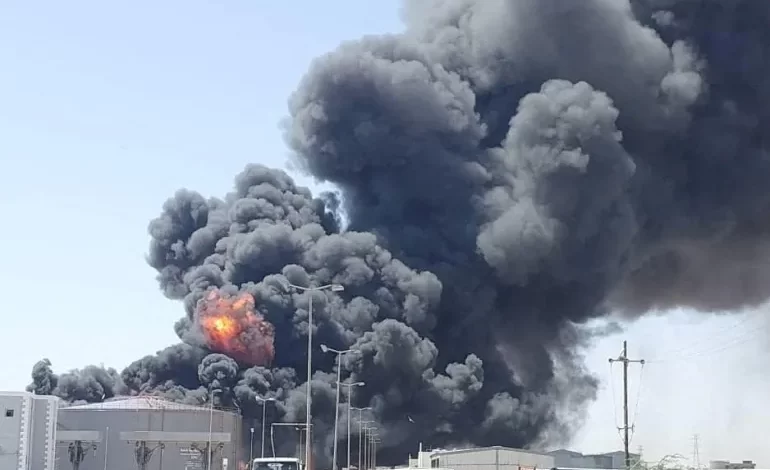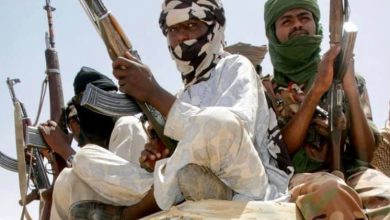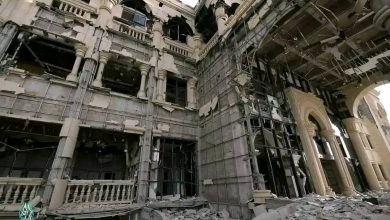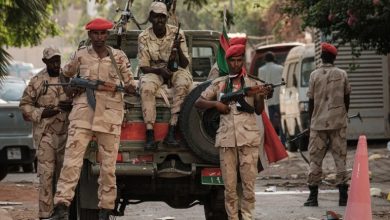After Sudan’s Skies Caught Fire… Who Will Win the Drone War?

Sudan Events – Agencies
At the beginning of this spring, specifically in March, the Sudanese Armed Forces (SAF) managed to drive Mohamed Hamdan Dagalo’s (Hemedti’s) Rapid Support Forces (RSF) out of Khartoum. The SAF regained control of the Republican Palace, marking a significant victory after a string of RSF defeats that continued even after recapturing the capital.
However, this did not mean Hemedti had conceded defeat. His regional ties, cross-border tribal alliances, and control over substantial resources granting him extraordinary financial capacity enabled him to escalate the conflict into a new, dangerous phase—what could now be called a drone war.
Having been defeated on the ground, the RSF began deploying drones in unprecedented, intensive attacks on previously secure areas, shifting the shape of the war and potentially ushering in its final and most dangerous stage.
Drone Assaults on Port Sudan
Between May 4th and 7th, RSF drones relentlessly bombarded Port Sudan. These UAVs struck strategic targets far from RSF strongholds, including fuel storage facilities, an ammunition depot, a military base, the city’s main power station, and the airport. Port Sudan now serves as the de facto capital for Sudan’s government on the Red Sea coast.
Some of these attacks ignited massive fires and caused widespread power outages, forcing authorities to temporarily suspend flights as a precaution—sparking fear and shock among residents.
Expanding Drone Warfare
The RSF’s use of drones wasn’t limited to Port Sudan. In recent months, as SAF neutralized RSF influence in central Sudan, drones increasingly targeted vital civilian infrastructure and military sites in territories retaken or controlled by the army.
Functioning as a rebellious militia, the RSF has targeted civilian livelihoods alongside military objectives. One prominent incident occurred in January, when RSF drones bombed the Merowe Dam—Sudan’s largest hydroelectric facility—damaging transformers and cutting off power across vast areas of northern Sudan.
Merowe Dam generates 40–60% of Sudan’s electricity, making the consequences of the strike immediate—crippling hospitals, water stations, and civilian life.
Similarly, on April 25, RSF drones attacked the Atbara substation in River Nile State, causing a massive fire and blackouts across River Nile and Red Sea States—further burdening already suffering civilians.
Between late 2024 and March 2025, around 50 drone strikes targeted infrastructure and logistics hubs in northern Sudan, with nearly half of the raids focusing on Merowe Dam, Dongola Airport, and Atbara Airport.
Strategic Targets
Each attack highlights the RSF’s emerging strategy: use drones to degrade the military and undermine civilian confidence in SAF’s ability to protect them.
By hitting vital infrastructure—like power grids, fuel depots, and remote bases—the RSF seeks to erode central government authority and render even “secure” zones unlivable.
The RSF thus aims to demonstrate that even if the SAF controls cities like Khartoum or Port Sudan, it cannot fully protect them from drone strikes. This is a form of psychological warfare aimed at destabilizing eastern and northern Sudan.
Moreover, by striking airports and depots far from frontlines, the RSF intends to exhaust SAF defenses and disrupt its resupply and reinforcement capabilities.
Given the RSF’s retreat to its western stronghold, it faces challenges in conducting conventional operations in the east. Drones offer a remote offensive tool, thrusting Sudan into a full-fledged drone war.
Ultimately, the RSF’s reliance on UAVs reflects its recognition of inferior manpower and air capabilities compared to the national army, using technology to level the battlefield.
A Variety of Drones
Drones provide the RSF with long-range strike capability to compensate for territorial losses. Primarily, the RSF uses loitering munitions—relatively small, low-cost drones that hover over targets before diving like a missile. These can be deployed in coordinated swarms.
Analysts describe the RSF’s suicide drones as delta-wing aircraft with boxy fuselages and piston engines—optimized for one-way strikes. Newer variants appear to have smaller radar signatures and higher speeds to bypass air defenses.
Though each drone carries a limited payload, a coordinated swarm can cause serious damage—evident in Port Sudan, where coordinated attacks ignited fuel tanks and damaged infrastructure.
In Port Sudan, for instance, the RSF launched an initial wave of 11 suicide drones at military targets including the Osman Digna Air Base. Most were shot down, serving as a distraction while a second, larger “strategic” drone breached defenses and hit a high-value target.
This tactic—overwhelming defenses with swarms before deploying a more lethal drone—underscores the RSF’s relatively advanced drone strategy.
In addition, larger combat drones believed to be Chinese-made have been spotted. Satellite imagery from late 2024 and early 2025 revealed advanced drones at Nyala Airport, an RSF-controlled base in South Darfur.
Defense analysts from Jane’s identified these as likely CH-95 drones, produced by China Aerospace Science and Technology Corporation. These UAVs offer long-range precision strike and surveillance capabilities, flying for 6–12 hours, with a maximum altitude of 7,000 meters and a cruising speed above 200 km/h.
Their 12-meter wingspan allows for heavier payloads including electro-optical sensors, radar, guided munitions, communications tools, and electronic warfare equipment.
This means the RSF can strike key targets like fuel depots and the Merowe grid from hundreds of kilometers away. However, operating such advanced UAVs requires training, logistics, and likely foreign assistance—suggesting external actors are supporting RSF’s drone program.
Army’s Countermeasures
The Sudanese army now faces the challenge of redeploying air-defense units to protect core infrastructure, possibly at the expense of frontline offensives in Kordofan or Darfur. This may delay major attacks on RSF-held territories in western Sudan.
In response to the May drone attacks, SAF units in Port Sudan deployed anti-aircraft fire to intercept several UAVs. SAF is believed to have moved short-range air defense systems—including anti-aircraft guns and man-portable missiles—to likely targets in the north and east.
Reports also suggest the army is using electronic warfare—signal jamming and radio frequency detectors—to disrupt drone guidance systems.
Additionally, SAF has launched preemptive strikes on RSF drone bases, repeatedly bombing Nyala Airport in South Darfur, thought to be a launch and storage hub for larger RSF drones.
Satellite images confirm Nyala was heavily bombed in early 2025, damaging newly constructed hangars believed to house drones. In February, one airstrike reportedly killed dozens and destroyed a major part of the RSF’s drone infrastructure.
SAF also employs its own UAV fleet. Equipped with Turkish Bayraktar drones and possibly others, the army conducts aerial surveillance and intercepts RSF drones mid-air with precision missiles—originally intended for ground targets.
During the Port Sudan attacks, the army temporarily suspended civilian air traffic and imposed no-fly zones to avoid collisions and free its air defenses—highlighting its seriousness in responding to the threat.
Army Adapts to the Drone War
This indicates the SAF is adapting and developing its counter-drone capabilities—responding strategically to RSF’s remote warfare tactics.
However, the drone campaign risks expanding the regional dimensions of the war. Observers warn that RSF’s ability to hit a Red Sea coastal city raises concerns among Sudan’s neighbors and international backers.
Military analyst Alan Boswell told the Washington Post that this represents a dramatic escalation, expanding both the geographic and strategic scope of the war, and warned that such strikes could draw regional powers like Saudi Arabia and Egypt into the conflict.
In the biblical tale of Samson, the hero, captured and powerless, in a final act of rage, collapses a temple onto his enemies. Is the RSF today acting like Samson—having lost its compass?
It seems that after losing its grip on power, the RSF has turned its drones not just against the army, but the Sudanese people themselves. Once claiming to defend the state and identity, it now attacks cities and villages.
Stripped of central authority, the RSF appears determined to destroy everything. The drones have become Hemedti’s tool to collapse the temple on everyone. But the Sudanese army, by evolving with the battle and adapting on the ground, shows it understands the RSF’s intentions—and is working to neutralize them.



